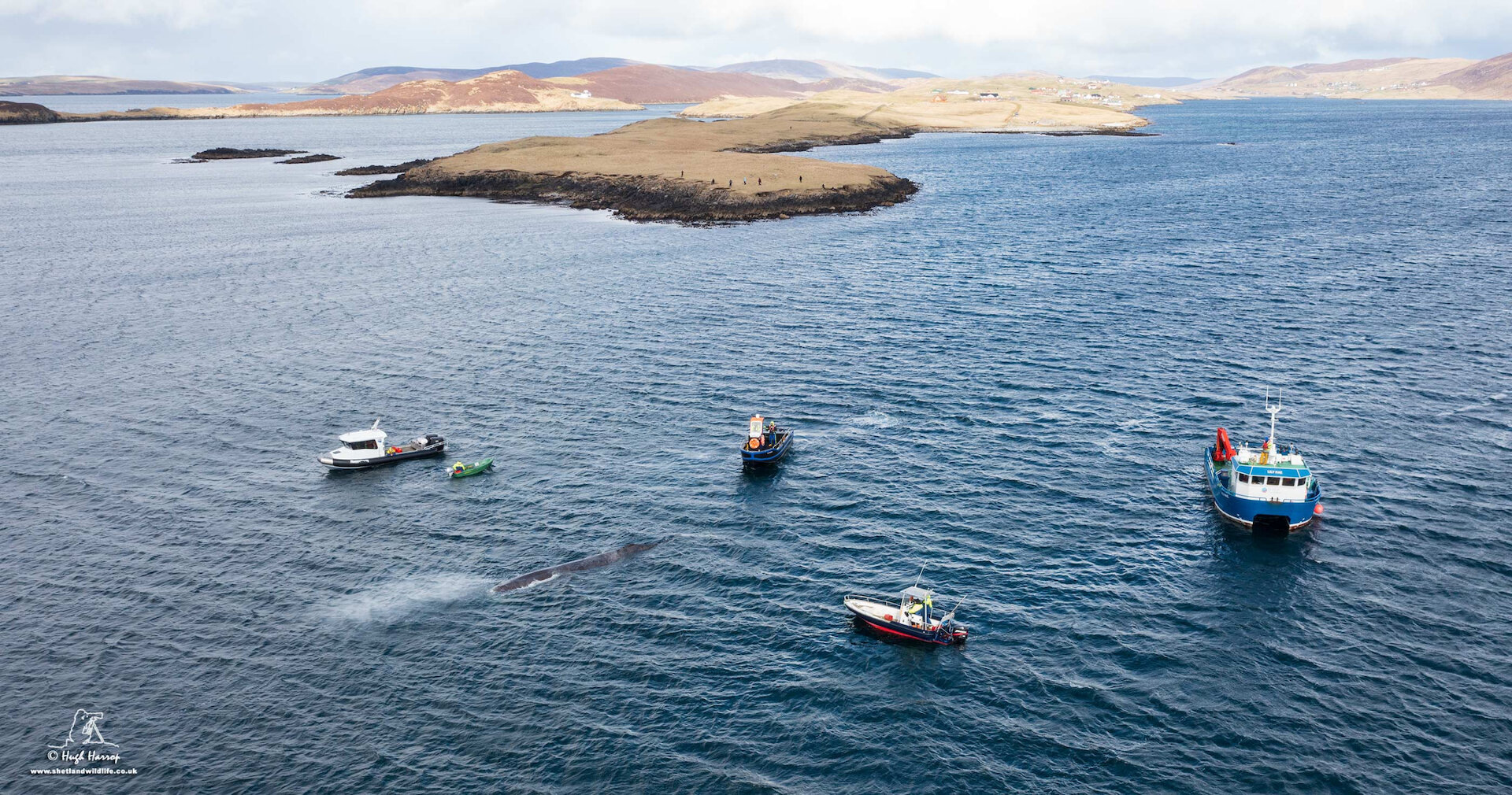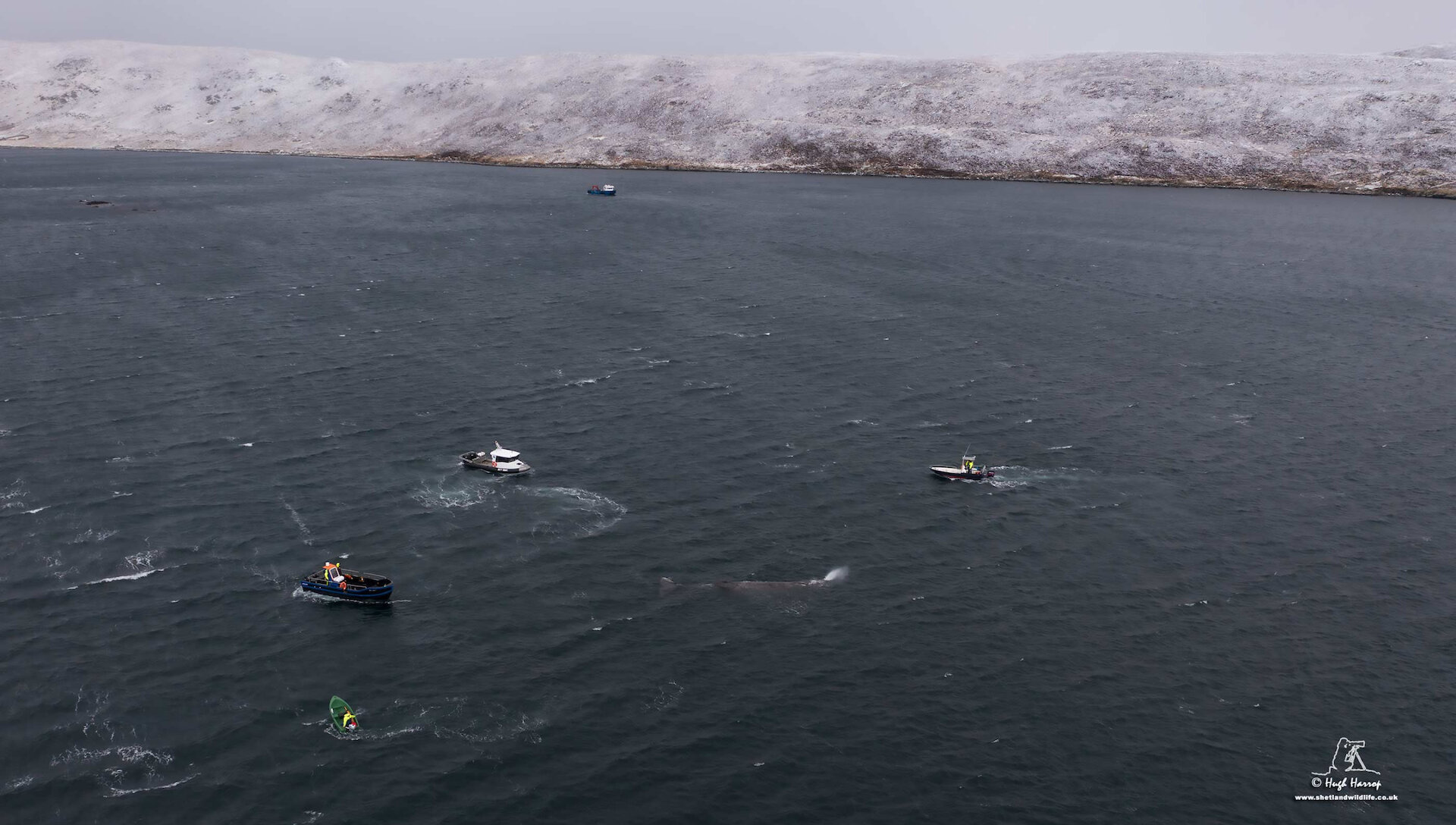When the first reports of a whale swimming inshore at Whiteness Voe reached Shetland wildlife experts, they expected to see a humpback. Exciting, but not uncommon.
Instead, they were astonished to discover a sperm whale, more used to swimming the ultradeep waters off the Shetland-Faroe Shelf.
In 30 years only a handful of sperm whales have been seen close to the shore in Shetland.
That meant the initial reaction was one of exhilaration, soon dampened by the realisation that this whale was confused, potentially unwell and at risk of stranding.
What happened next was a remarkable feat of community co-operation involving wildlife specialists, salmon farmers, local whale watchers and residents – one of whom bravely entered the water in his small boat in a bid to coax the immense animal back to deeper waters.


